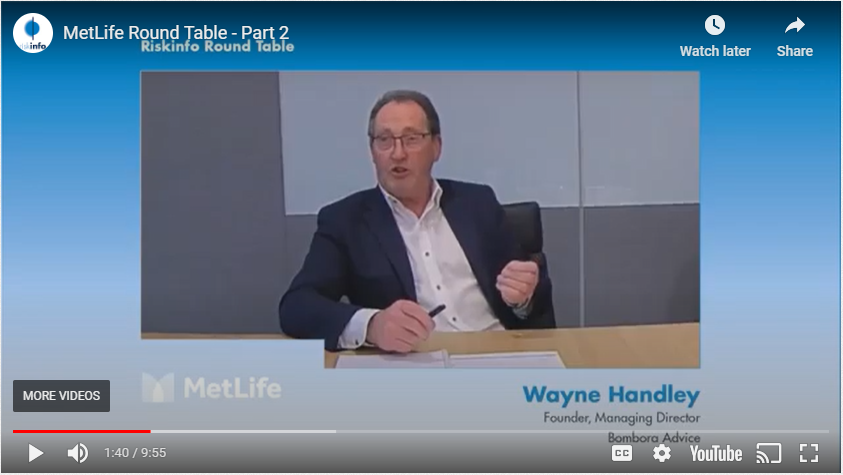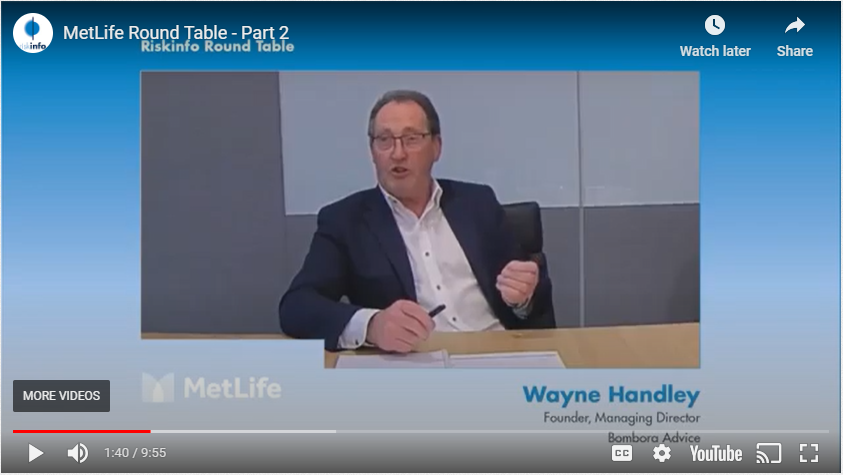A call to position client file notes at the heart of any future advice record developed for clients of financial advisers generated significant reader interest during the past week…
A call has been made to position client file notes at the heart of any future advice record developed for clients of financial advisers. This comes in the aftermath of the Government’s decision to replace what it characterises as ‘unwieldy’ Statements of Advice with something that is more fit-for-purpose (see: QoA Review Decisions – SoAs Replaced…).
The call was made by Bombora Advice founder and influential industry figure, Wayne Handley, at a recent industry Round Table event co-hosted by Riskinfo and MetLife, at which Handley advocated strongly that industry stakeholders – in seeking to offer a self-regulated solution to the Government in developing the more fit-for-purpose solution – should include client file notes at the heart of future client advice records.
…it is client file notes to which professional indemnity insurers and the legal profession have always turned
According to Handley, it is client file notes to which professional indemnity insurers and the legal profession have always turned when investigating any client advice disputes – never to the Statements of Advice: “It always is, and always has been,” says Handley, who believes these file notes should be placed ‘front and centre’ in any new solution that replaces SoAs.
Handley told other Round Table panellists there exists an opportunity in the wake of the Government’s initial acceptance of 14 of the 22 recommendations made in the Quality of Advice Review for the industry to take a lead and to offer the regulators a solution the sector believes will deliver a more workable replacement for SoAs – one which will serve the longer-term interests of consumers as well as advisers.

He said there should be a number of essential elements which should be included in whatever record or document replaces the SoA, including client file notes, after which individual licensee firms could make their own determinations as to any additional elements they felt should be included.
Handley pointed out that ASIC will never tell the financial advice sector what it wants it to do: “They never have,” says Handley, who says now is the time for the industry to show some leadership and to get on the front foot in contributing to a solution that will benefit all stakeholders.





Remember the ASIC model “risk SOA” about seven years ago
ASIC insisted that the first page of the document should tell the client how much commission the adviser was earning. Most clients don’t give a fig unless they’re paying directly to the adviser. They know we get commission . They also know that a lot of other people earn a living primarily off commission. People still buy cars, people still buy solar panels and people still buy and sell houses.
I agree with with Wayne, we have to tell ASIC/Treasury what we want and let them tell us what’s wrong with it. At the end of the day I think it will be the decision of the P I insurers as to how many improvements we can make from a 40 page risk only SOA.
And some advisers had better learn how to write appropriate file notes.
What worries me about using file notes as the ‘main’ vector point is that they could conceivably be altered at some future time, if they were not ‘deemed’ to be adequate by the prosecuted person (the accused) at the time of the complaint. An SoA , however, MUST be given to a client at the time of doing business – it is a solid and verifiable record of what was said and what was not said and done. Once given to the client it can never be altered! This is how it should be. It is a permanent and contemporaneous record of what happened and a copy is then held by BOTH parties. The onus is, of course, on the client to ensure is is all correct at that time. Once that is all put to bed everyone moves forward BUT it is a solid, carved in stone rendition of what advice was given.
I don’t have to try too hard to imagine, years down the track if there’s no SoA when a complaint is made for whatever reason, that certain advisers ‘may’ be able to alter files notes that nobody has seen before and make their version of the file note fit with what they need at complaint time to clear themselves. I honestly can’t believe such weight is given to file notes – they are, in some circumstances, quite easy to change whereas you can’t change an SoA that has been given to a client years prior. What amj I missing here, please?!
Comments are closed.